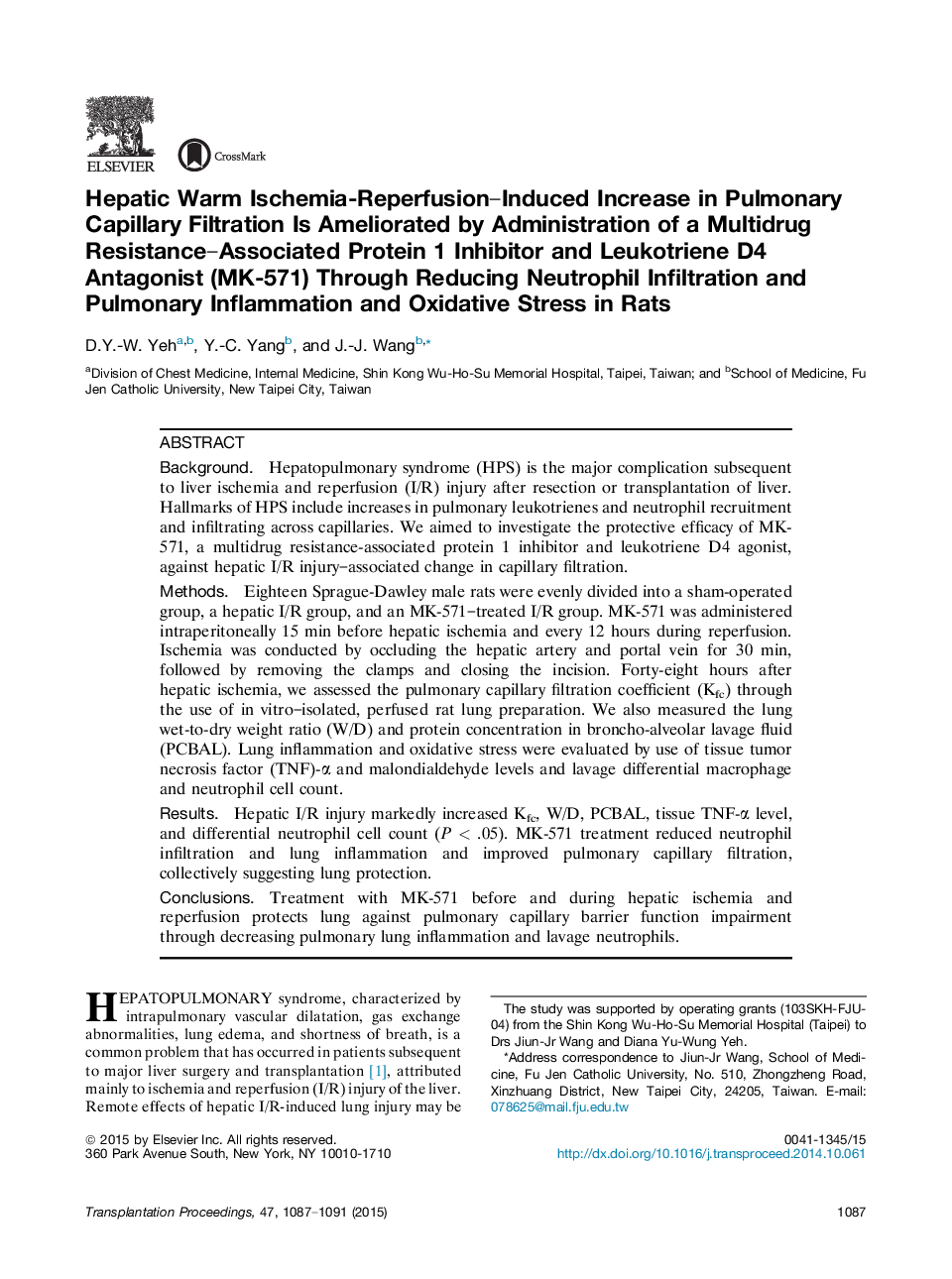| Article ID | Journal | Published Year | Pages | File Type |
|---|---|---|---|---|
| 6247447 | Transplantation Proceedings | 2015 | 5 Pages |
â¢This study showed that MK-571, as a multidrug resistance-associated protein 1 inhibitor and CysLT1 receptor and leukotriene D4 agonist, may have potential therapeutic significance in preventive treatment against hepatic I/R-induced acute lung injury.â¢Forty-eight hours subsequent to haptic I/R injury, we found significantly increased levels of pulmonary inflammation and lipid peroxidation, neutrophil infiltration, protein leak, and water content in the lungs.â¢Treatment with MK-571 before ischemia and during reperfusion injury markedly reduced lung inflammation, oxidative stress, and neutrophil infiltration and protected pulmonary capillary barrier function.â¢Results suggested that leukotrienes, particularly LTD4 and LTC4, may play important roles in hepatic I/R-induced remote lung injury.
BackgroundHepatopulmonary syndrome (HPS) is the major complication subsequent to liver ischemia and reperfusion (I/R) injury after resection or transplantation of liver. Hallmarks of HPS include increases in pulmonary leukotrienes and neutrophil recruitment and infiltrating across capillaries. We aimed to investigate the protective efficacy of MK-571, a multidrug resistance-associated protein 1 inhibitor and leukotriene D4 agonist, against hepatic I/R injury-associated change in capillary filtration.MethodsEighteen Sprague-Dawley male rats were evenly divided into a sham-operated group, a hepatic I/R group, and an MK-571-treated I/R group. MK-571 was administered intraperitoneally 15 min before hepatic ischemia and every 12 hours during reperfusion. Ischemia was conducted by occluding the hepatic artery and portal vein for 30 min, followed by removing the clamps and closing the incision. Forty-eight hours after hepatic ischemia, we assessed the pulmonary capillary filtration coefficient (Kfc) through the use of in vitro-isolated, perfused rat lung preparation. We also measured the lung wet-to-dry weight ratio (W/D) and protein concentration in broncho-alveolar lavage fluid (PCBAL). Lung inflammation and oxidative stress were evaluated by use of tissue tumor necrosis factor (TNF)-α and malondialdehyde levels and lavage differential macrophage and neutrophil cell count.ResultsHepatic I/R injury markedly increased Kfc, W/D, PCBAL, tissue TNF-α level, and differential neutrophil cell count (P < .05). MK-571 treatment reduced neutrophil infiltration and lung inflammation and improved pulmonary capillary filtration, collectively suggesting lung protection.ConclusionsTreatment with MK-571 before and during hepatic ischemia and reperfusion protects lung against pulmonary capillary barrier function impairment through decreasing pulmonary lung inflammation and lavage neutrophils.
